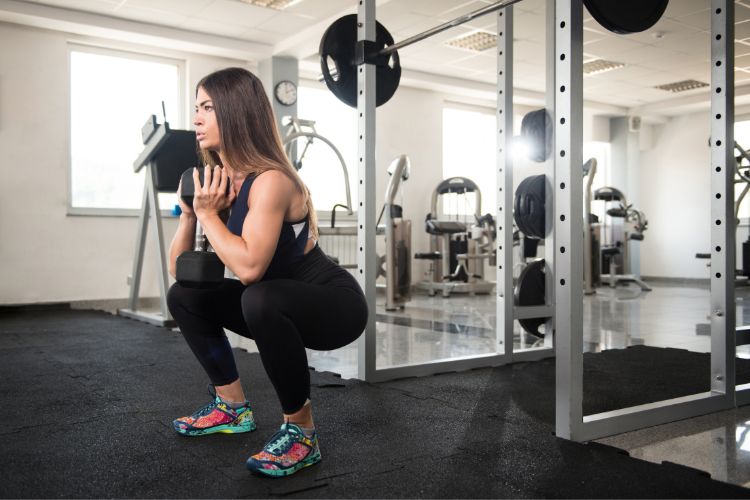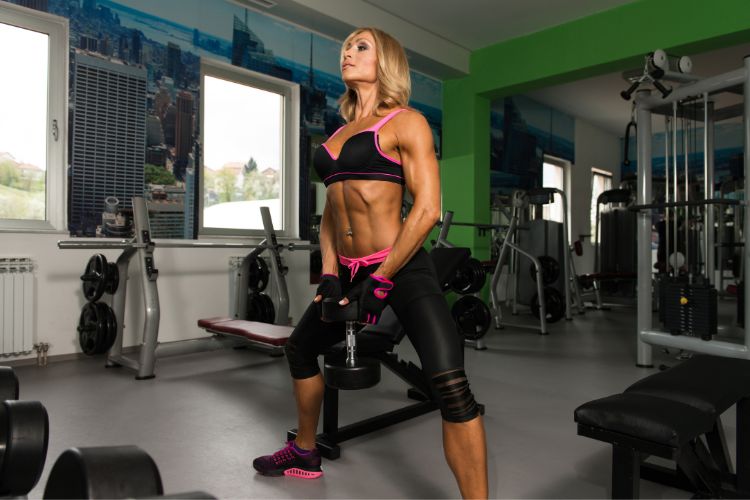Sign up for workout ideas, training advice, reviews of the latest gear and more.






When it comes to strength training, women often face a myriad of misconceptions. From the fear of bulking up to the belief that lifting heavy weights is exclusively for men, these myths can deter many from reaping the benefits of a solid strength training regimen. Enter kettlebell training—a versatile, efficient, and empowering form of exercise that is perfect for women of all fitness levels. In this blog post, we’ll explore why kettlebell strength training is an excellent choice for women, how to get started, and the best exercises to incorporate into your routine.
Kettlebells are uniquely designed to provide a full-body workout in a short amount of time. Unlike traditional weightlifting, which often isolates specific muscle groups, kettlebell exercises engage multiple muscles simultaneously. This means you can build strength, improve endurance, and burn calories all in one session.
Kettlebell training focuses on functional movements that mimic real-life activities, such as lifting groceries, picking up children, or carrying luggage. For women, this translates to improved strength and confidence in daily tasks, reducing the risk of injury and enhancing overall quality of life.
One of the biggest concerns women have about strength training is the fear of becoming overly muscular. Kettlebell training, however, promotes lean muscle development rather than bulk. The dynamic, fluid movements help tone and define muscles without adding excessive mass.
Many kettlebell exercises require significant core engagement, which helps strengthen the abdominal muscles and improve posture. For women who spend long hours sitting at a desk or carrying heavy bags, this can be a game-changer.
Strength training is crucial for maintaining bone density, especially as women age and become more susceptible to osteoporosis. Kettlebell exercises, which involve weight-bearing movements, can help strengthen bones and reduce the risk of fractures.
Selecting the appropriate kettlebell weight is essential for safety and effectiveness. Beginners should start with a lighter weight (e.g., 8-12 kg) to focus on proper form and technique. As you gain strength and confidence, you can gradually increase the weight.
Before diving into complex exercises, it’s important to learn the foundational movements. These include the kettlebell swing, deadlift, and goblet squat. Proper form is critical to prevent injury and maximize results.
Like any workout, kettlebell training should begin with a warm-up to prepare your muscles and joints. Dynamic stretches, light cardio, and mobility exercises are great options. After your workout, take time to cool down and stretch to aid recovery.
Kettlebell training can be intense, so it’s important to listen to your body and avoid overexertion. Start with shorter sessions (20-30 minutes) and gradually increase the duration as your fitness level improves.
The kettlebell swing is the cornerstone of kettlebell training and an excellent exercise for building explosive power and endurance.
The goblet squat is a beginner-friendly exercise that strengthens the lower body and improves mobility.
The kettlebell deadlift is a fundamental movement that teaches proper hip hinge mechanics.
This compound movement combines strength and coordination for a powerful upper-body workout.
The Turkish get-up is a challenging full-body exercise that enhances strength, stability, and mobility.
Before creating a workout plan, identify your goals. Are you looking to build strength, lose weight, or improve endurance? Your goals will dictate the structure and intensity of your workouts.
To prevent plateaus and keep your workouts engaging, incorporate a mix of exercises that target different muscle groups. For example, pair lower-body exercises like squats with upper-body movements like presses.
As you become stronger, gradually increase the weight or intensity of your workouts. This principle, known as progressive overload, is key to continuous improvement.
Rest and recovery are essential for muscle growth and injury prevention. Aim to include at least one or two rest days per week, depending on your fitness level.
Proper form is crucial for preventing injuries and maximizing results. If you’re unsure about your technique, consider working with a certified kettlebell instructor.
Consistency is the key to seeing progress. Aim to incorporate kettlebell training into your routine 2-4 times per week.
Strength training requires proper nutrition to support muscle recovery and growth. Focus on a balanced diet rich in protein, healthy fats, and complex carbohydrates.
Keep a workout journal to track your progress, including the weights you use, the number of reps and sets, and how you feel after each session. This will help you stay motivated and identify areas for improvement.
Starting with a weight that’s too heavy can compromise your form and increase the risk of injury. Always prioritize proper technique over lifting heavy.
Many kettlebell exercises rely on core strength. Failing to engage your core can lead to poor form and reduced effectiveness.
A proper warm-up prepares your body for the demands of kettlebell training and reduces the risk of injury. Don’t skip this crucial step.
While consistency is important, overtraining can lead to burnout and injury. Listen to your body and give yourself time to recover.
Beyond the physical benefits, kettlebell training can have a profound impact on mental health. The focus and concentration required for each movement can help reduce stress and improve mindfulness. Additionally, the sense of accomplishment that comes from mastering new exercises and increasing strength can boost confidence and self-esteem.
Kettlebell strength training is a powerful tool for women looking to build strength, improve fitness, and enhance overall well-being. By incorporating kettlebell exercises into your routine, you can enjoy a wide range of physical and mental benefits, from increased muscle tone and bone density to reduced stress and improved confidence. Remember to start slow, prioritize proper form, and stay consistent. With time and dedication, you’ll unlock your full potential and discover just how strong and capable you truly are.
So, grab a kettlebell, embrace the challenge, and embark on a journey to a stronger, healthier, and more confident you!
Stay up to date on the latest women’s health, fitness and lifestyle trends and tips.